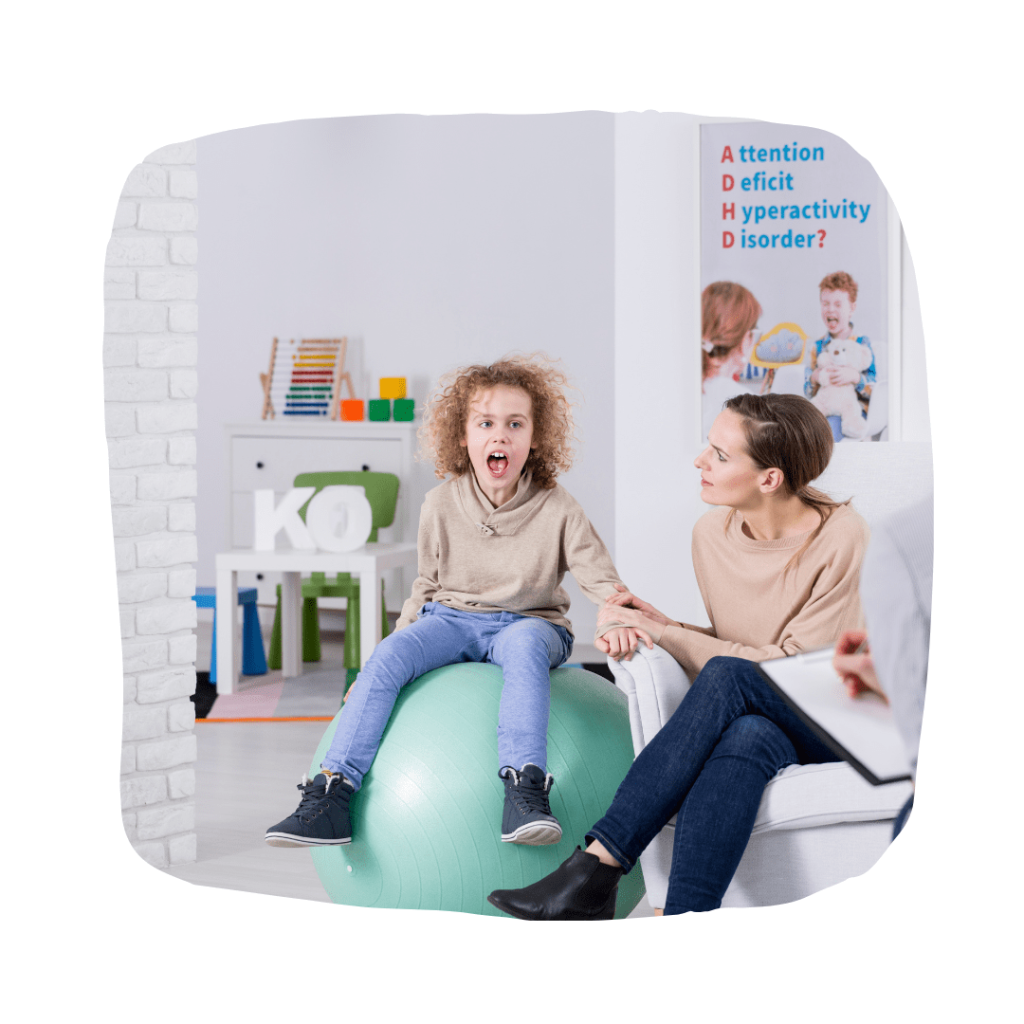Speaking to a doctor about your child’s ADHD symptoms can be stressful because you want to make sure you remember to bring up all of the important details that would help your child. We thought it would be useful to have a checklist of things to consider before meeting with your doctor.
Use this list to get the most out of your child’s visit!

Before your visit:
Document specific symptoms: Make a list of your child’s specific behaviors and challenges related to attention, hyperactivity, and impulsivity. Note the frequency, intensity, and impact on their daily life, including academic performance, social interactions, and family dynamics.
Observe different settings: Pay attention to how your child behaves in various environments, such as home, school, and extracurricular activities. This can provide valuable insights into the consistency and context of their symptoms.
Keep a record of behavioral patterns: Note any patterns or triggers that may worsen or improve your child’s symptoms. This can include certain situations, foods, or sleep patterns that seem to have an effect.
Understand family medical history: Be aware of any family history of ADHD or related conditions, as it may increase the likelihood of your child having ADHD.
Prepare questions for the medical professional: Develop a list of questions to ask the healthcare provider during the appointment. Some examples may include:
- What is the diagnostic process for ADHD?
- Are there any medical conditions that can mimic ADHD symptoms?
- What treatment options are available, and what are their potential side effects?
- How can I support my child at home and in school?
Other things to consider:
Be open-minded: Approach the discussion with a willingness to listen and learn from the medical professional’s expertise. Be receptive to their recommendations and ask for clarification if needed.
Avoid self-diagnosis: While it’s important to be informed, avoid jumping to conclusions or self-diagnosing your child. Trust the expertise of the medical professional and rely on their assessment.
Provide a comprehensive overview: Ensure that you share a complete picture of your child’s symptoms and daily challenges. Be honest and transparent about their strengths and weaknesses.
Share information from multiple sources: If possible, gather input from teachers, caregivers, and other relevant individuals involved in your child’s life. This can provide a more comprehensive understanding of their symptoms and functioning.

Promote a cooperative approach: Frame the conversation with the medical professional as a collaboration to best support your child. Emphasize your commitment to working together for their well-being.
Non-Medical Interventions:
Medical interventions are a necessity for some children, as they do not live happy, productive lives. However, non-medical interventions are very good alternatives for many children. If you are a parent that is concerned about medicating your child use these helpful alternatives to guide you. Most parents will look into a combination of the following things:
- Physical exercise: Engage your child in regular physical activities as it can help reduce hyperactivity, improve focus, and promote overall well-being. Exercise stimulates the release of neurotransmitters like dopamine, which play a role in attention and mood regulation.
- Mindfulness and meditation: Teach your child relaxation techniques, deep breathing exercises, and mindfulness practices. These techniques can help improve attention, self-awareness, and emotional regulation.
- Healthy diet: Focus on providing a balanced diet rich in fruits, vegetables, lean proteins, and whole grains. Limit sugary snacks and processed foods, as they can exacerbate ADHD symptoms. Omega-3 fatty acids, found in foods like fish and flaxseeds, have shown potential benefits for cognitive function.
- Structured routines and organization: Establish predictable daily routines and create a structured environment at home. Use visual schedules, organizers, and clear expectations to help your child manage time, tasks, and responsibilities effectively.
- Sensory interventions: Consider incorporating sensory tools or activities, such as fidget toys, weighted blankets, compression sheets or noise-cancelling headphones, to help your child regulate their sensory input and improve focus.


Preparing for a visit with a medical professional about your child’s ADHD symptoms is essential for accurate diagnosis and effective treatment. Remember to approach the conversation with an open mind, cooperative mindset, and a comprehensive
understanding of your child’s symptoms and behaviors.
We hope this guide helps you consider all aspects of your visit so you feel empowered in choosing the best option for your child.

